Bento, a dish loved by many around the world but not many people knows about its origin and different variations.
Aside from sushi and ramen, Japan also has another well-known dish called bento. Bento is not so different from our ordinary dish of rice but what makes a box of bento a sight to behold is the colorful imagination of its creator. Today, Illume-eMag will tell you about the origin and different kinds of bento in Japan.
Starting out as a dish made for the nobility in Japan. Over time, Bento rice has gradually been popularized, serving the busy and busy life of Japanese people. To this day, the bento culture has been very familiar to the people of the land of the rising sun, from students, office workers to ordinary working class who have the habit of using boxed lunches, as a time-saver in this fast-paced industrial life.
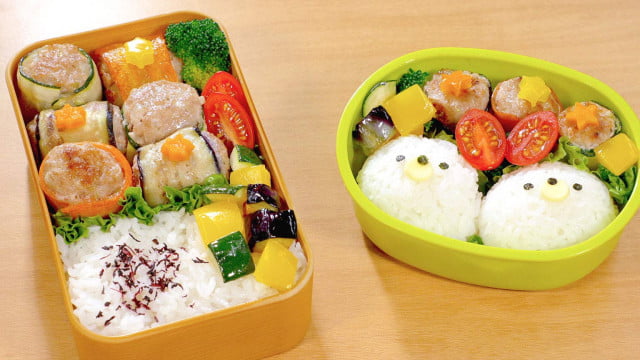
Bento is considered a signature culinary art of the Japanese. Bento is a the art and the ones who make it are artists. If you think bento is just rice and some food put together in a box, you are wrong. The dishes in the bento box need to be arranged in a harmonious and balanced manner between the ingredients in color and nutrition, bringing both deliciousness and “deliciousness” to the user.
So what is actually inside a bento box?
Traditionally, a standard bento should be full of starch, protein and fiber, as in the story “Totochan by the window” described as consisting of “food from the forest and from the sea”, with rice, fish and meat, sautéed or cooked vegetables, and desserts (possibly fruit) arranged in a 4:3:2:1 ratio (4 parts rice, 3 parts meat/fish, 2 parts vegetables and 1 dessert).
A standard bento box will contain half of the rice, and the other half will have a few side dishes made with ingredients such as vegetables, meat, fish, and eggs. Bento doesn’t have a fixed layout, its appearance is the imagination of the make so that the bento box can become more attractive, funnier, even a work of art. The Japanese lunch box is also produced quite beautifully and delicately, often made of lacquer to help increase the aesthetic sense, stimulate the diners to be happier and more appetizing.
There are also many different types of bento
In fact, in each region, each period, bento boxes are transformed into many styles with many different forms, but up to now, we can meet most of the following types:
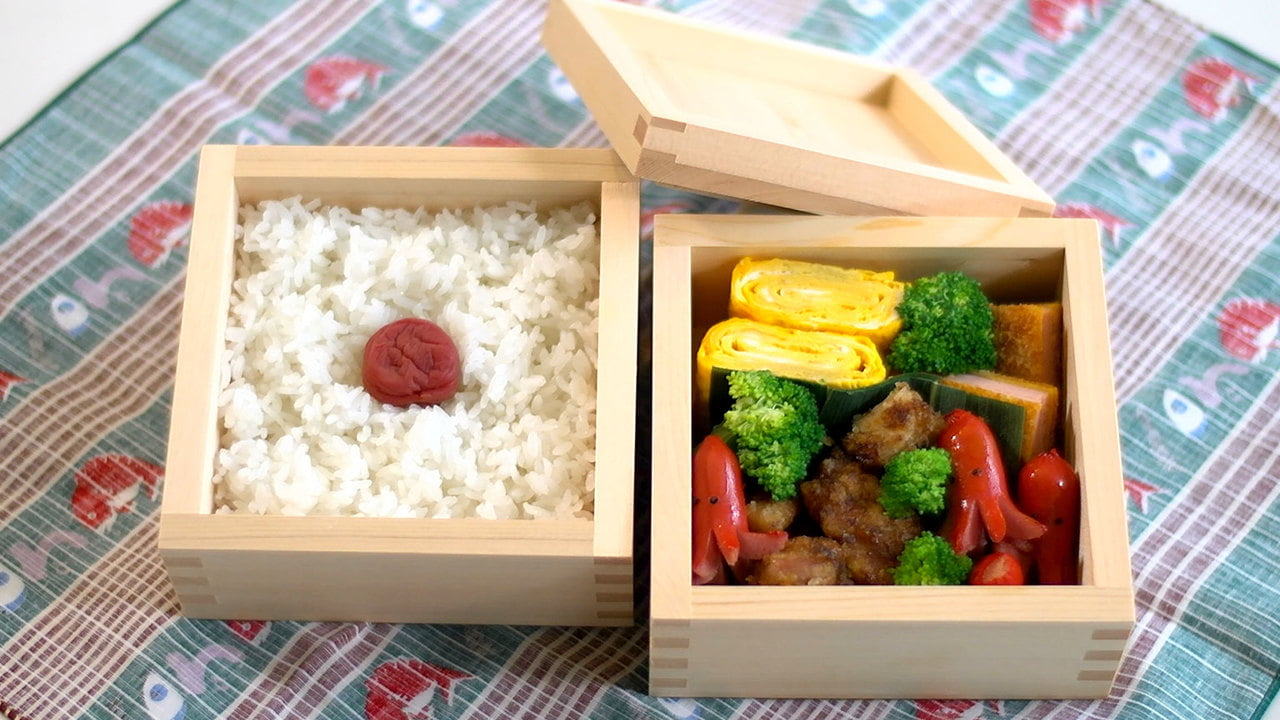
Hinomaru Bento: This is a simple boxed lunch, commonly known as the national flag rice, consisting of only white rice and a red pickled apricot in the middle, similar to the color of the Japanese flag.
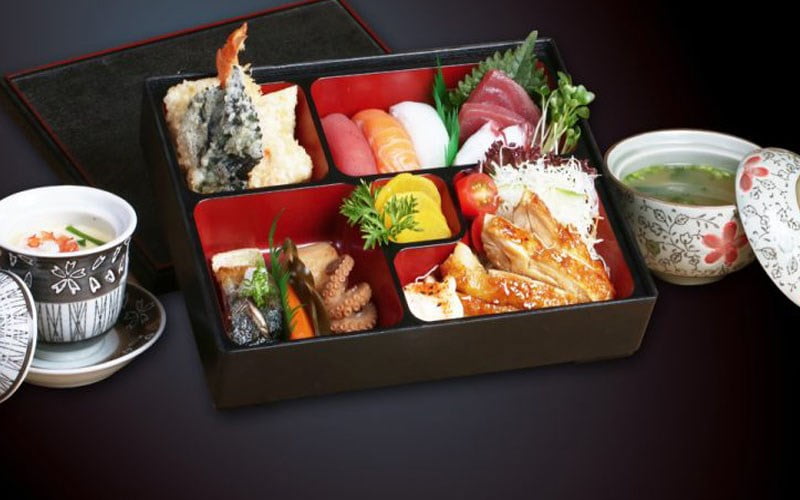
Shokado Bento: Is rice packed in a lacquered wooden box, extremely luxurious, mainly used for kings and nobles in the past at outdoor parties such as tea parties or cherry blossom viewing.
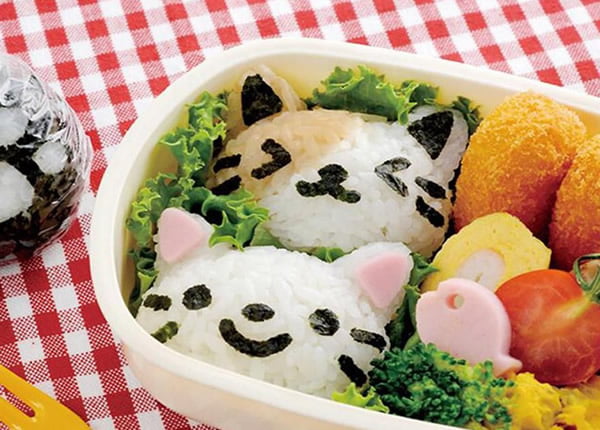
Oekakiben: The most amazing Bento when the maker will use rice and cooking ingredients to draw a picture.
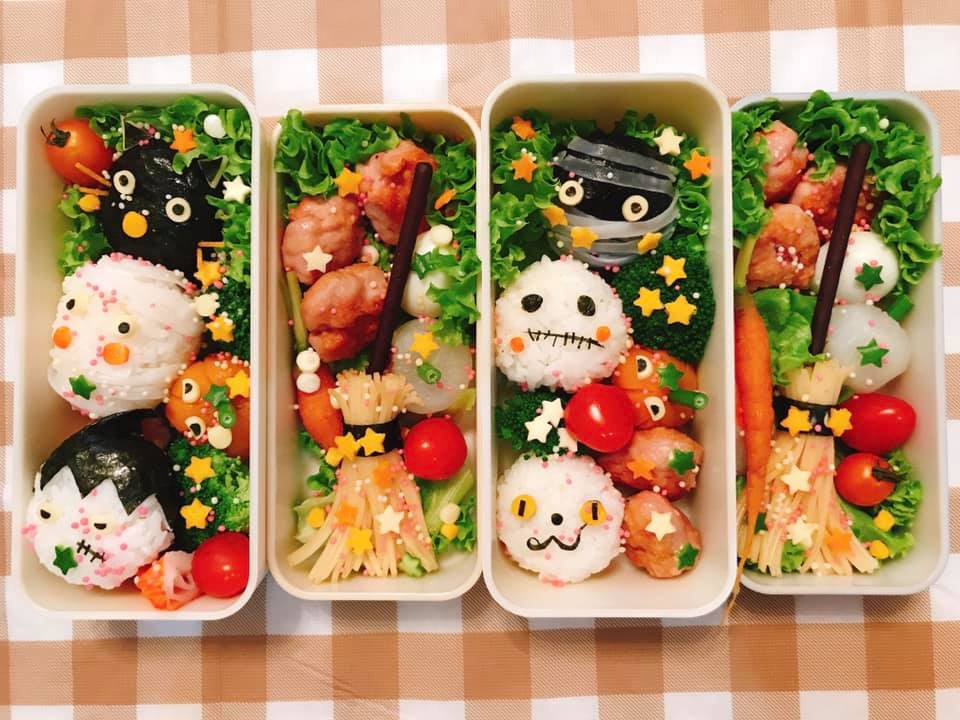
Kyaraben: A bento box often made for children, shaped like funny and cute animals like Pikachu, Doremon…
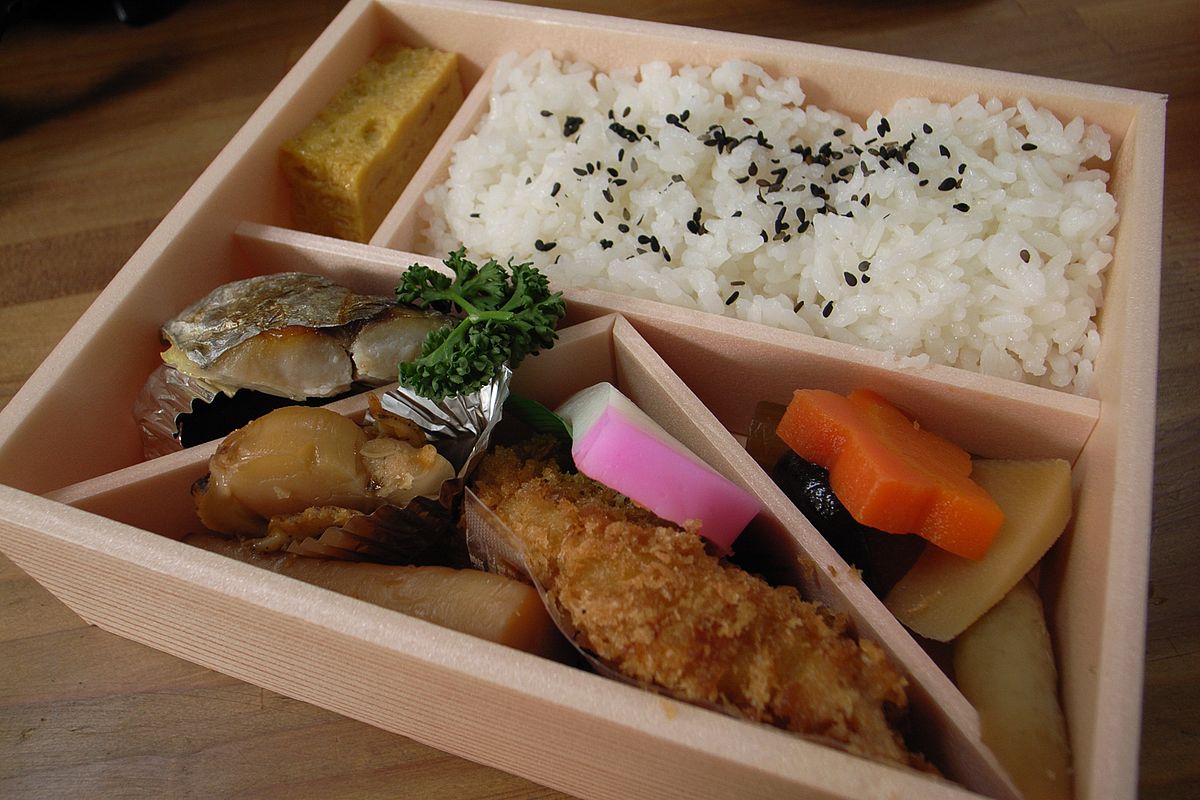
Sanshoku Bento: A three-color lunch box that is very eye-catching, usually made from eggs, peas and minced meat, then spread in a straight line over rice.
Makunouchi Bento: Also full of rice, meat, vegetables and even a portion of Wagashi cake or fruit dessert. The name of this type of bento means lunch box, and is eaten during the break when the audience is in the middle of a Kabuki or Noh play – two types of traditional Japanese plays, which are usually quite long.
Meaning of bento box
The greatest value of Japanese bento is in the love that wives and mothers want to convey when preparing boxed lunches for their family members. To be able to complete a beautiful bento box, you must be patient, meticulous and creative. Above all, you must know how to put your feelings into the preparation. Because Bento is not simply a lunch box, but also an expression of the worker’s love for the eater. Not just a normal lunch box, a bento box also contains the feelings and aesthetics of the person who made it
If preparing to feed their children when they go to school, the mother often arranges the lunch box into fun shapes, or just makes it attractive so that the child can eat more. When preparing to feed her husband after tiring working hours, the wife will convey her love and family happiness in each image they put in the lunch box. Therefore, each person will have their own style, their own nuance, no one is the same when presenting bento boxes.

